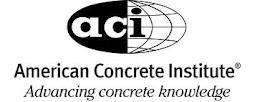A working group of the American Concrete Institute’s (ACI) Committee 131 on Building Information Modeling (BIM) is actively developing an Information Delivery Manual (IDM) for cast-in-place concrete. The IDM will capture in written form the interaction that occurs in the design and construction of concrete structures by identifying the parties involved in information exchange, what information is exchanged and when, based on a typical construction project timeline.
This IDM project is the outcome of ACI’s Strategic Development Council’s (SDC) initiative to focus the concrete industry on developing interoperability standards, and represents the first step in the development of data exchanges into the buildingSMART’s Industry Foundation Classes (IFC). IFC is an open and neutral data exchange format that covers construction information related to procurement, design, construction, and operations. IFCs will allow project information to be entered once, and then to be available and usable by every project team member across any software platform. The improved communication, coordination, and collaboration afforded by BIM implementation have already been shown to save time and money in projects.
A $60,000 grant from the Charles Pankow Foundation accounts for the majority of the $90,000 funding for this IDM project. Remaining funding is provided by Bechtel, Tekla, Bentley, Applied Systems Associates (aSa), RMC Research & Education Foundation, CRSI Education & Research Foundation, ASCC Foundation, Post Tensioning Institute, and two of the ACI Foundation’s Councils – the Concrete Research Council (CRC) and the Strategic Development Council (SDC).
A team from Georgia Technological University’s Digital Building Laboratory headed by Professor Chuck Eastman will assist the ACI IDM working group. The group’s first meeting took place during December of 2011 in Atlanta and its expected to complete the IDM by the end of 2012. The next meeting will be held in conjunction with the ACI Spring 2012 Convention in Dallas, Texas. BD+C
Related Stories
Mass Timber | Jan 27, 2023
How to set up your next mass timber construction project for success
XL Construction co-founder Dave Beck shares important preconstruction steps for designing and building mass timber buildings.
Sports and Recreational Facilities | Jan 26, 2023
Miami’s motorsport ‘country club’ to build sleek events center
Designed by renowned Italian design firm Pininfarina and with Revuelta as architect, The Event Campus at The Concours Club will be the first and only motorsport-based event campus located within minutes of a major metro area.
Student Housing | Jan 26, 2023
6 ways 'choice architecture' enhances student well-being in residence halls
The environments we build and inhabit shape our lives and the choices we make. NAC Architecture's Lauren Scranton shares six strategies for enhancing well-being in residence halls.
K-12 Schools | Jan 25, 2023
As gun incidents grow, schools have beefed up security significantly in recent years
Recently released federal data shows that U.S. schools have significantly raised security measures in recent years. About two-thirds of public schools now control access to school grounds—not just the building—up from about half in the 2017-18 school year.
AEC Tech Innovation | Jan 24, 2023
ConTech investment weathered last year’s shaky economy
Investment in construction technology (ConTech) hit $5.38 billion last year (less than a 1% falloff compared to 2021) from 228 deals, according to CEMEX Ventures’ estimates. The firm announced its top 50 construction technology startups of 2023.
Sports and Recreational Facilities | Jan 24, 2023
Nashville boasts the largest soccer-specific stadium in the U.S. and Canada
At 30,105 seats and 530,000 sf, GEODIS Park, which opened in 2022, is the largest soccer-specific stadium in the U.S. and Canada. Created by design firms Populous and HASTINGS in collaboration with the Metro Nashville Sports Authority, GEODIS Park serves as the home of the Nashville Soccer Club as well as a venue for performances and events.
Concrete | Jan 24, 2023
Researchers investigate ancient Roman concrete to make durable, lower carbon mortar
Researchers have turned to an ancient Roman concrete recipe to develop more durable concrete that lasts for centuries and can potentially reduce the carbon impact of the built environment.
Architects | Jan 23, 2023
PSMJ report: The fed’s wrecking ball is hitting the private construction sector
Inflation may be starting to show some signs of cooling, but the Fed isn’t backing down anytime soon and the impact is becoming more noticeable in the architecture, engineering, and construction (A/E/C) space. The overall A/E/C outlook continues a downward trend and this is driven largely by the freefall happening in key private-sector markets.
Multifamily Housing | Jan 23, 2023
Long Beach, Calif., office tower converted to market rate multifamily housing
A project to convert an underperforming mid-century office tower in Long Beach, Calif., created badly needed market rate housing with a significantly lowered carbon footprint. The adaptive reuse project, composed of 203,177 sf including parking, created 106 apartment units out of a Class B office building that had been vacant for about 10 years.
Hotel Facilities | Jan 23, 2023
U.S. hotel construction pipeline up 14% to close out 2022
At the end of 2022’s fourth quarter, the U.S. construction pipeline was up 14% by projects and 12% by rooms year-over-year, according to Lodging Econometrics.

















